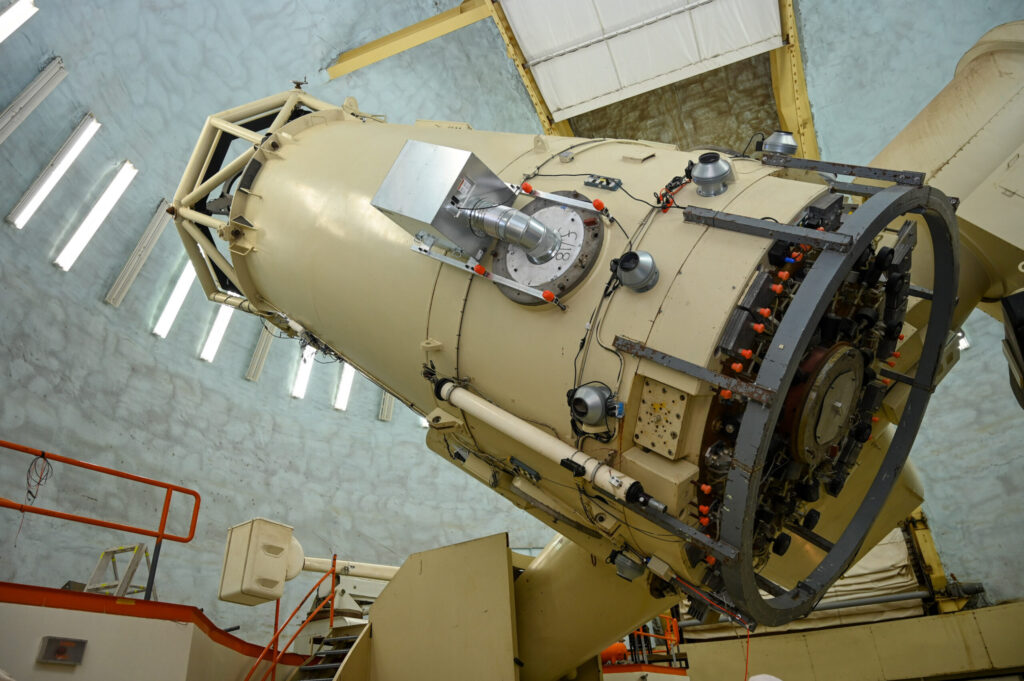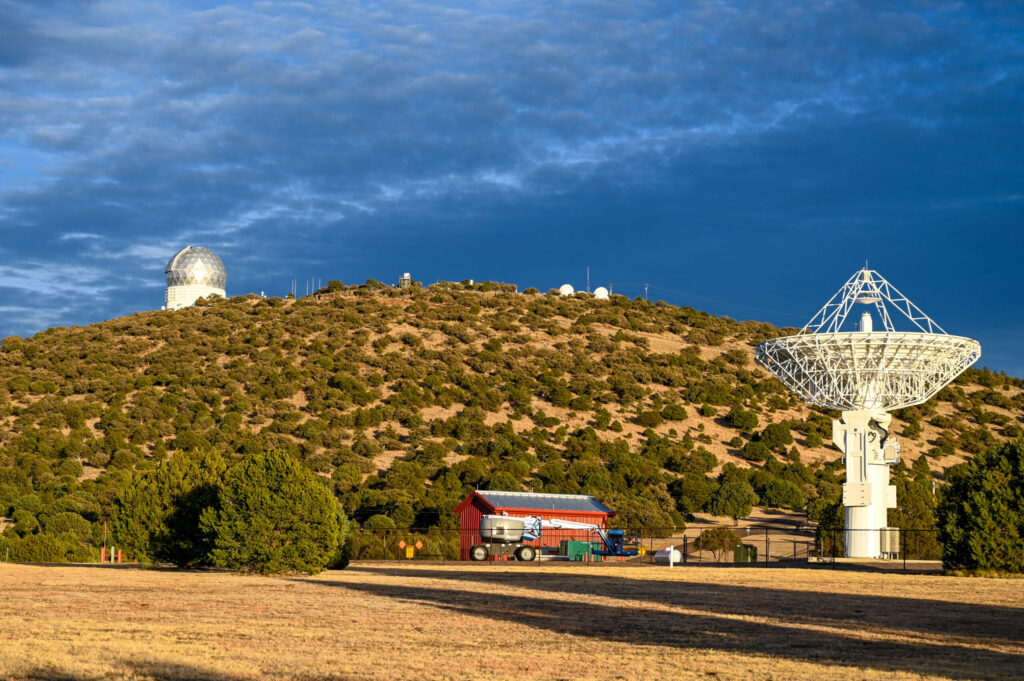USA – Texas
Texas – The Lone Star State
The landscape changes and we come to an area where there are many small private oil pumps. It is fitting that we find a place to stay in Oil City. Not far from Oil City is the tri-state marker of Louisiana, Texas and Arkansas, which is documented with a border stone that wants to be sought. The area here is sparsely populated and the houses alternate with forest areas, larger and smaller, older and newer oil pumps. Every now and then the respective homeowner hoards scrap metal or scrap (which is probably a matter of opinion). On our way to our acquaintances we see the Texas known to us from movies, big pastures with huge herds of cows and from time to time a farm house. The people are immensely friendly here, which we notice when we have to ask for directions. Even the oncoming traffic (from pick-up trucks to tractors, something else does not drive here) always greets us.

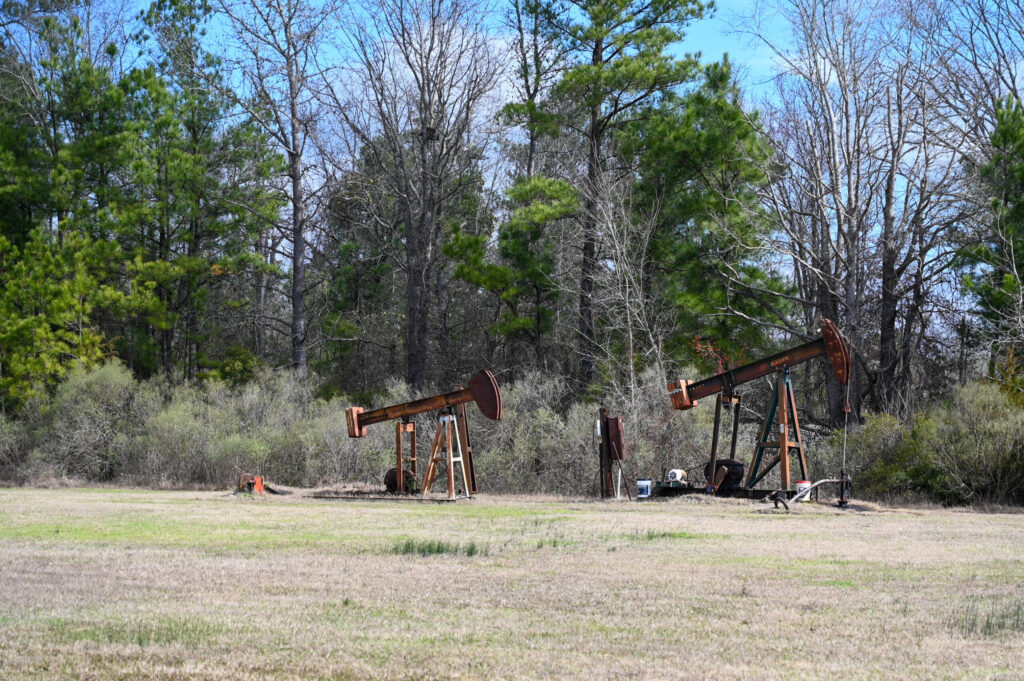
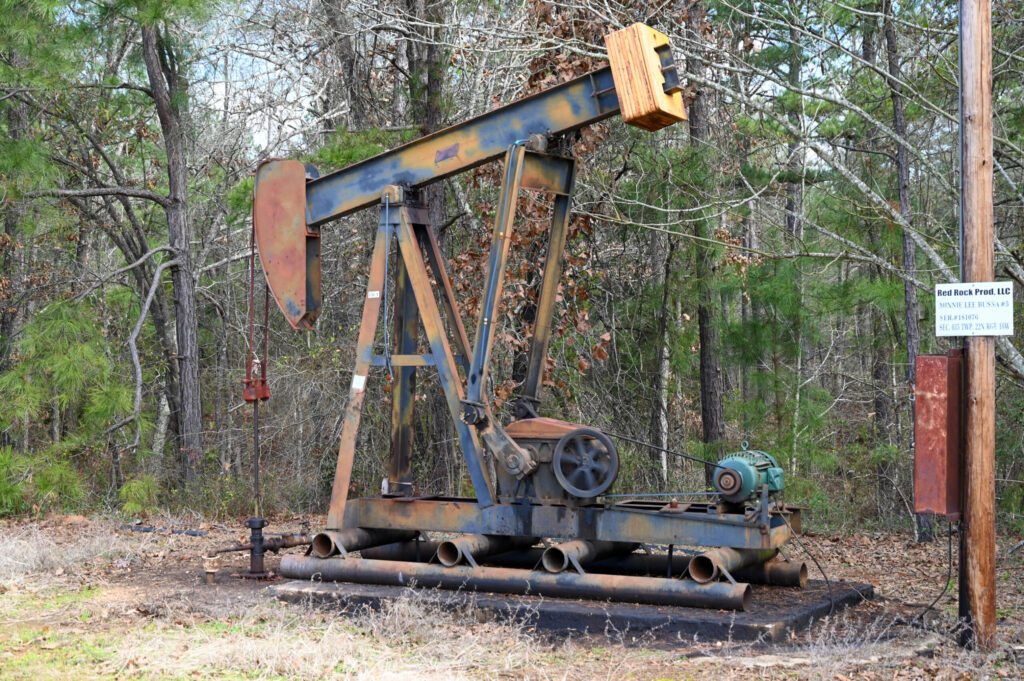
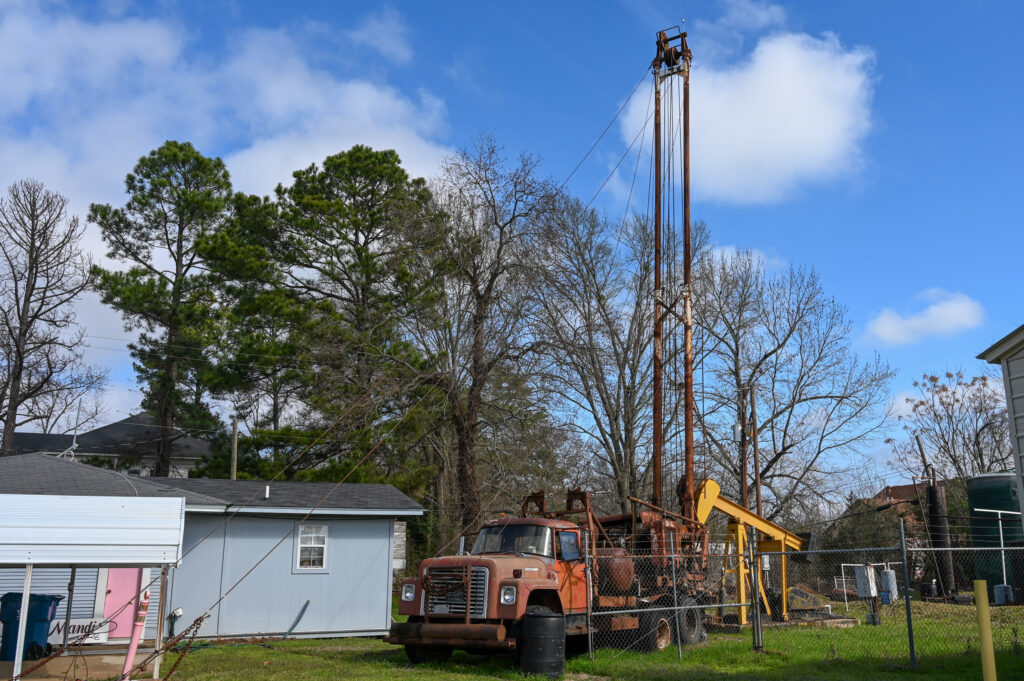
Our acquaintances cultivate an area of about 3,000 acres (approx. 12 km2) and plant, as is customary in this area, mainly soy, corn and wheat. We are allowed to stay in the guest house for a few days and they show us their farm and the machines. Fabian is completely fascinated by the large tractors and the agricultural technology used. There is real joy when it comes to talking shop, even from our hosts! We even go to Paris (no, the one in Texas) for dinner. In this corner of Texas, there aren’t many places to shop, so we take the opportunity to shop in a Farmers Co-op (we think it’s going to be something like the Landi). Maybe they have delicious Texas steak! Unfortunately not, however, it has anything the farmer and rancher needs: medicines for cattle (which in our country you only get from the vet), tools, spare parts for the fence, cowboy boots, work clothes, halters, dog toys and much more. Unfortunately, nothing edible for us non-farmers. No worries, we continue to stick to normal shops.



What is not to be missed when being in the land of the Cowboys is a real rodeo. We’re lucky and Fort Worth hosts the Fort Worth Stock Show & Rodeo. It has been held every year since 1896 and is the oldest continuously running cattle show and rodeo. The cattle show and the halls, where you get everything from cows, trucks, trailers, fences, equipment for branding over clothing, you could compare with the Swiss OLMA fair, just much, much bigger. A special highlight for horse lovers are the Clydesdales, the Budweiser horses. These are immensely large cold-blooded beauties! The rodeo is just cool! These are really wild dudes who sit on a bucking horse or a bucking bull for 8 seconds without a saddle! Respect! The Chuckwagon race is also exciting. Two coaches compete with their four-spinners, who is the fastest. Action guaranteed! After the rodeo there is live music and drinks in a tent in front of the arena. Since we stay on the site anyway, we also have a beer. We think it’s great to see that most people wear either a cowboy hat, cowboy boots or both.
Throughout the night, the cows moo from the nearby area. A slightly different city noise. When we get up, the whole parking lot is full of trucks! If you want to have the best cow, you just have to get up early!




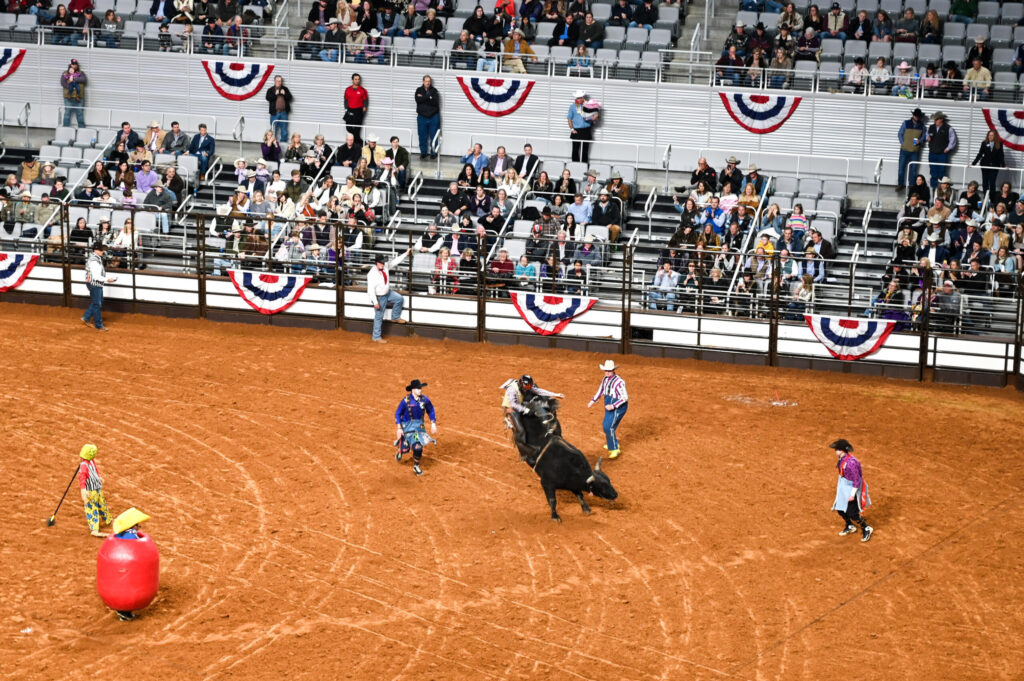
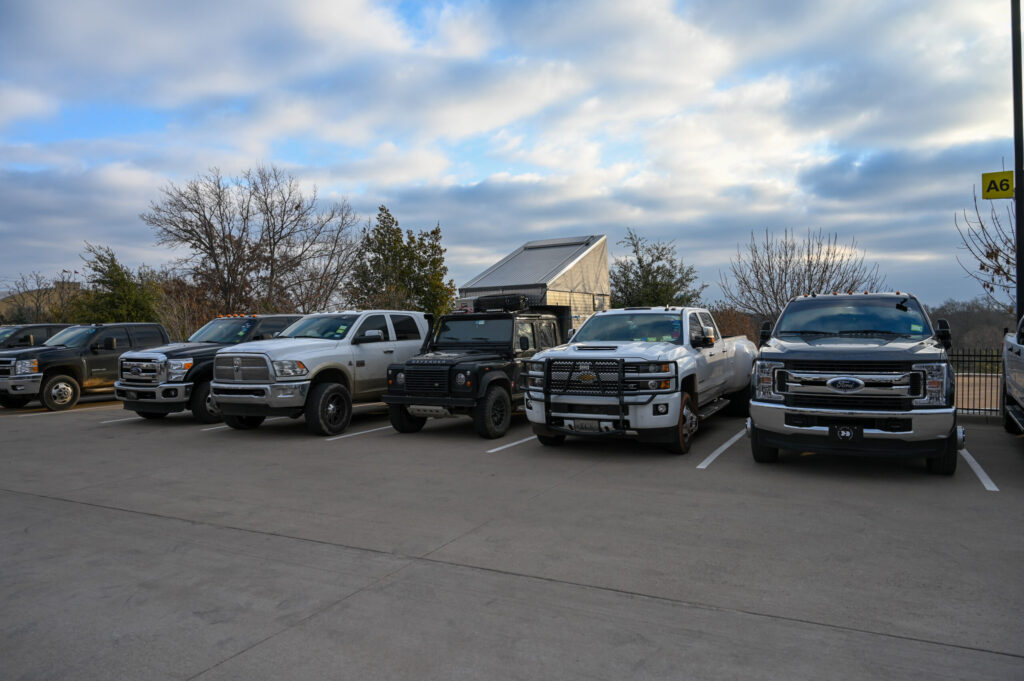
Austin
Our next stop is Austin. The capital of Texas has already been voted the most livable city in the United States three times in a row. We can only confirm this. The city is beautifully located on the Colorado River (no, the other one) and surrounded by parks. The river serves as a recreation area and we see joggers with and without dogs, walkers, kayakers and turtles. In the State Capitol, a beautiful building completely decorated in red stone, we take a guided tour. Austin calls itself Live Music Capital of the World. So we plunge into the nightlife in Sixth Street. Of course, a BBQ should not be missed. We’ll find it at Cooper’s Old Time Pit Bar-B-Que on Congress Avenue. For those who don’t know real Texas BBQ: It’s self-service, you say which meat and side dishes you want and get the whole thing wrapped in wax paper for eating at the table, which is actually a fixed bench set. The wax paper serves as a plate and so you don’t have a mess on the table. Actually quite practical… We take Beef Brisquet and it’s excellent! We liked Austin extremely well because the city is surrounded by nature, has a cool nightlife and is not as hectic and crowded as other big cities.



On the way to San Antonio we stay at the campsite of Cranes Mill Park at Canyon Lake. It’s Superbowl Sunday, the most important sporting event of the year for football fans. That’s why the campsite is probably fully booked. Because our neighbors are nice people, they invite us to watch the Superbowl after dinner on the outdoor TV of their RV. At least for me, the game isn’t so exciting because I have no clue about football. Our neighbours are definitely into it.
San Antonio
Following a tip, we park at The Pearl Area, just outside Downtown San Antonio. This used to be home to a brewery. The buildings have been preserved and the area is home to several restaurants, small shops, one of the campuses of The Culinary Institute of America, a bakery and the Hotel Emma. This one is really special! It has been possible to integrate the old furnishings of the former brewery into the hotel. As a non-hotel guest you can only see the entrance and lounge area. Former tanks have been converted into small seating niches, the pipe systems have been integrated into the architecture and the compressor for the former cooling system has found its prominent place in the lobby. The hotel building is beautifully located on the San Antonio River. From there we can walk along the River Walk to Downtown. The River Walk leads below the road level a total of about 24 km through San Antonio. Our section from The Pearl area to the city is fortunately a bit shorter. It is wonderfully peaceful along the river and the path is beautifully maintained and planted. The river is only a few meters wide and so you can admire the small squares that invite you to linger and artificial waterfalls on both sides of the river banks. The more you get to the city center, the busier the River Walk becomes. There are numerous restaurants on both sides and from time to time a small bridge to change the shores. Information boards contain interesting information about the respective location. There is also a kind of water taxi, a small ferry with a fixed timetable. A walk along the River Walk is definitely worthwhile.
We stroll further around the city centre and visit the cathedral and the Governors Palace from the outside. Under the latter, we actually imagined a kind of palace or even a smaller castle, especially since the Spaniards were in this area. The Governors Palace, however, is not a palace but a house where the Spanish governor used to live. It’s so inconspicuously small that we can’t find it right away. Only when a very friendly city employee points us in the right direction, we see it.
Don’t miss the San Antonio Missions either. These are five missions built along a 12.4 km stretch along the San Antonio River. As a whole, the missions reflect the Spanish Crown’s attempt to colonize the northern border of the Viceroyalty of New Spain and convert the indigenous population to the Christian faith. They were founded between 1690 and 1750 by Franciscans. Spain hoped to consolidate its interests in the New World while protecting itself against the French from eastern Louisiana. The individual missions are: Mission Concepcion, Mission San Jose, Mission San Juan, Mission Espada, Mission San Antonio de Valero (better known as “The Alamo”).
We first visit The Alamo, which is the only one of the missions located in the middle of Downtown San Antonio. The other missions are a little furhter outside. The beautifully maintained area is not very large. The well-known building is the actual church. However, there are only two rooms to visit, as the church is in a truly desolate state. There is an urgent need for funds so that the church can be restored to some extent. This church was the scene of a rebellion by Texas settlers between December 1835 and March 1836. It must be remembered that the Spaniards ruled this part of Texas until the end of the 18th century, but lost it to the Mexicans during the Mexican Revolution (1821-1835). They turned the mission into a fort (these soldiers came from Alamo del Parras in Coahuila, Mexico, hence the name “The Alamo”). When the American settlers were numerically superior to the Mexicans, the Mexican government tried to drive out the American settlers and regain control of the area. This led to unrest, and the settlers of both American and Mexican descent wanted to get rid of the Mexican government and establish the independent state of Texas. It came that a garrison of 187 Texas settlers occupied The Alamo for four months until they were all killed by Mexican General Santa Anna. After all, the Americans won this war. In 1845, the Republic of Texas was incorporated into the US federation.
Next we go to Mission San José, the most beautiful and largest of the five missions. In fact, the church building with the extensions is still completely preserved. We do not visit the church itself, but we walk around the huge park-like area, which is very neatly maintained.
When we return to the parking lot, we see a camper with an Austrian license plate next to ours. The inhabitants are named Babs and Helmut (with Jack Russell Emma). They are on a year-long tour through the USA. Since it is more comfortable to exchange our experiences on a campsite, we drive to one close by and spend a cozy evening together.

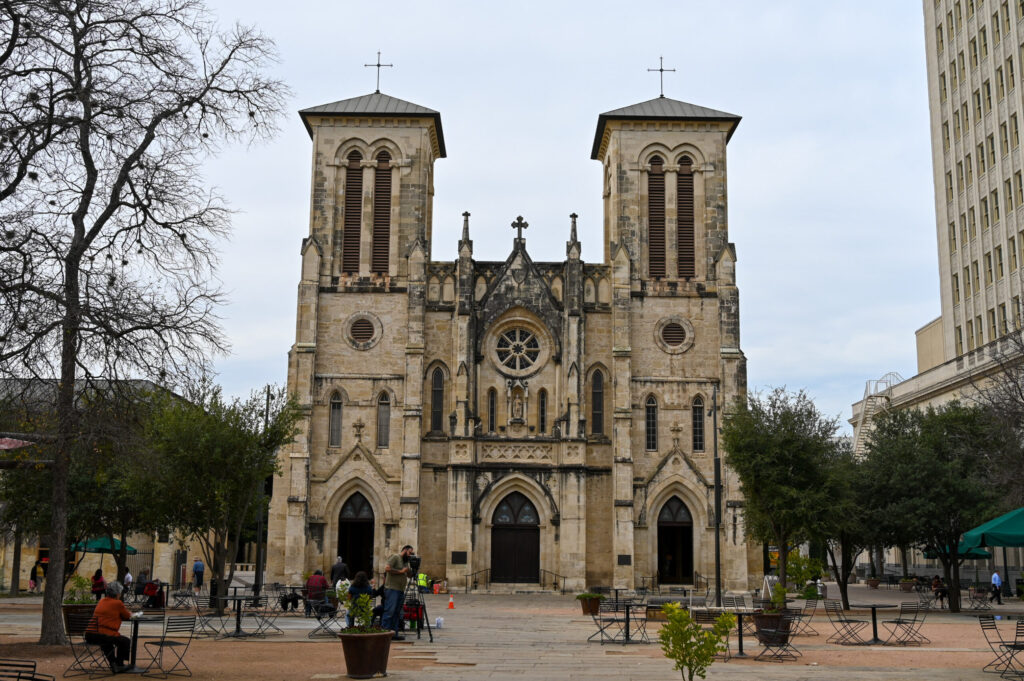
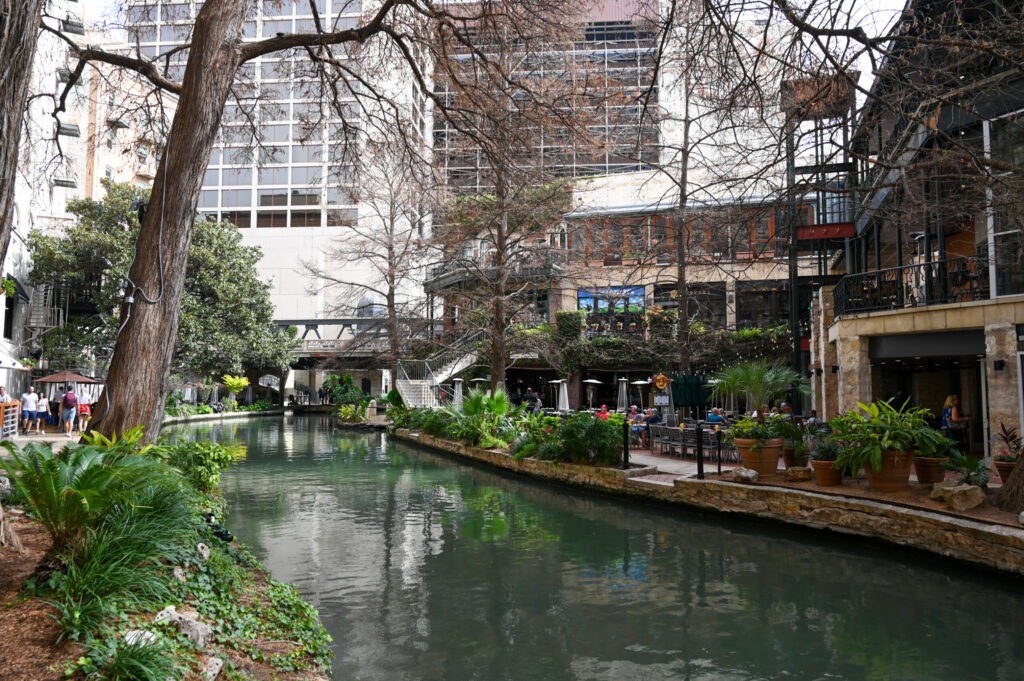

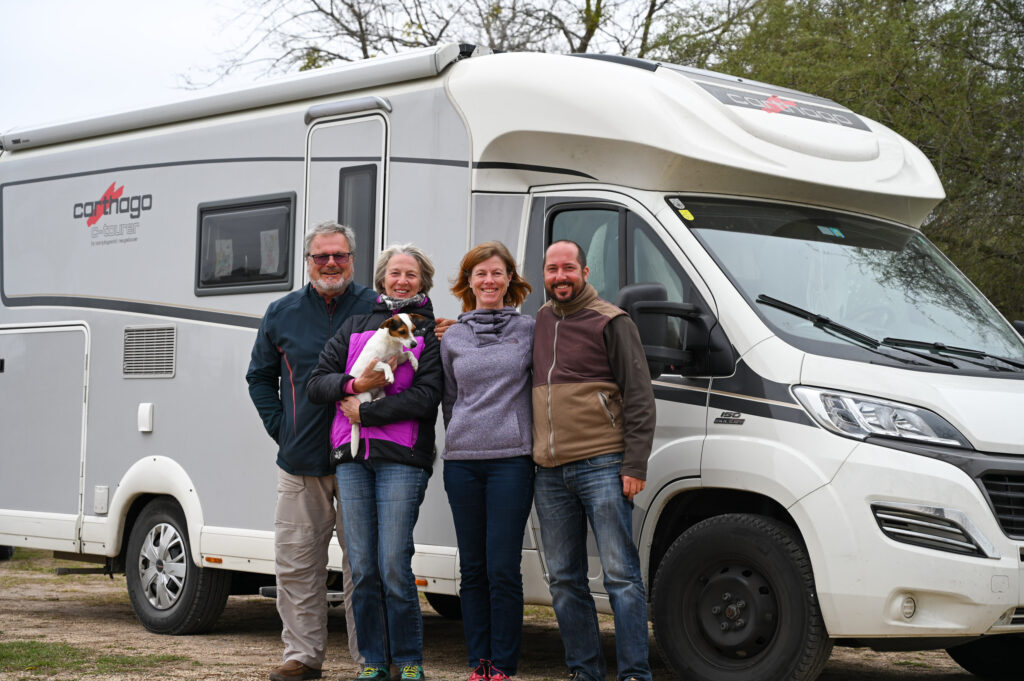
One of the most remote national parks in the United States
Big Bend National Park is not without reason called one of the most remote national parks (apart from those in Alaska). If you are not travelling like we do with your own travel vehicle and the national park is not on the road anyway, you can either fly to El Paso or Odessa/Midland and drive from there another five and a half or four and a half hours respectively by car until you are there. The long journey is definitely worth it.
Although remote, the national park is quite well visited. There are three campsites with a total of 219 pitches, a lodge and 116 backcountry pitches (backcountry camping only with permission). With well over 400,000 visitors a year, it gets scarce quite quickly with pitches… Therefore, it is very advisable to take care of the backcountry permits from the beginning, otherwise it can happen quickly that the most beautiful places are already gone and you have to dodge to the established camping places. The national park staff is very helpful and will be happy to advise.
On an area of 3,242km2 there are three ecosystems: the Chihuahua Desert, which occupies a large part of the national park, the Rio Grande and the Chisos Mountains.
In the Chihuahua Desert, besides the Roadrunner, there are mainly candelilla bushes, yuccas, ocotillos or cacti. The colors glow from yellow to red and purple in all shades. There should also be snakes. They are (fortunately) all still asleep, as it is still too cold for them at the beginning of February. It is fascinating how colourful not only the nature in the desert but also the hills are. This is probably due to the natural mineral resources such as zinc, lead, silver, mercury or cinnabar, which were mined here in the olden days.


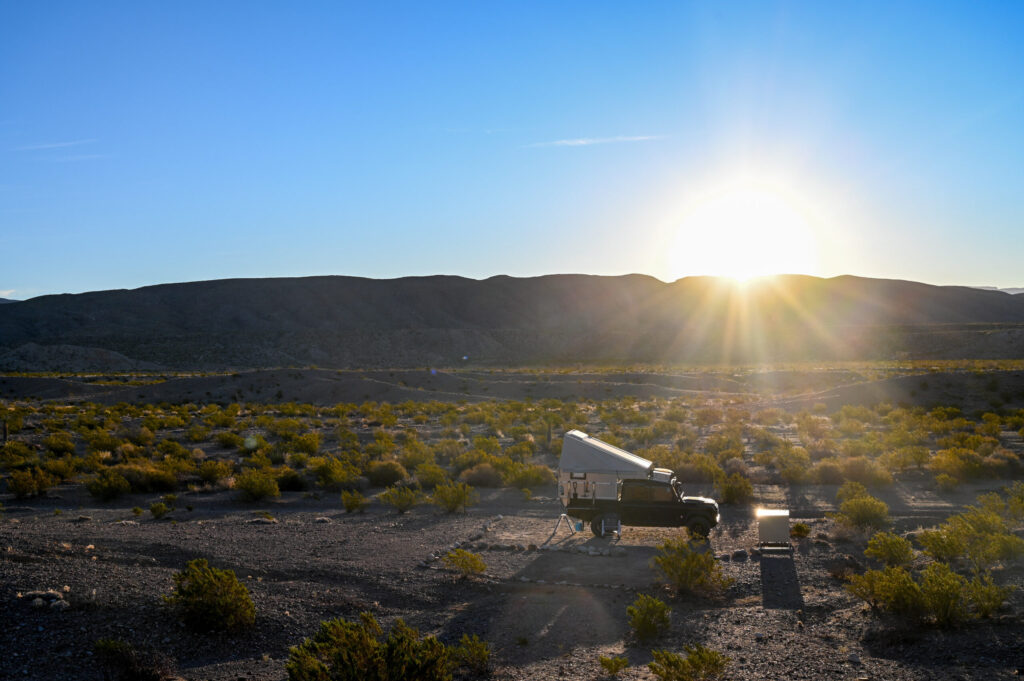

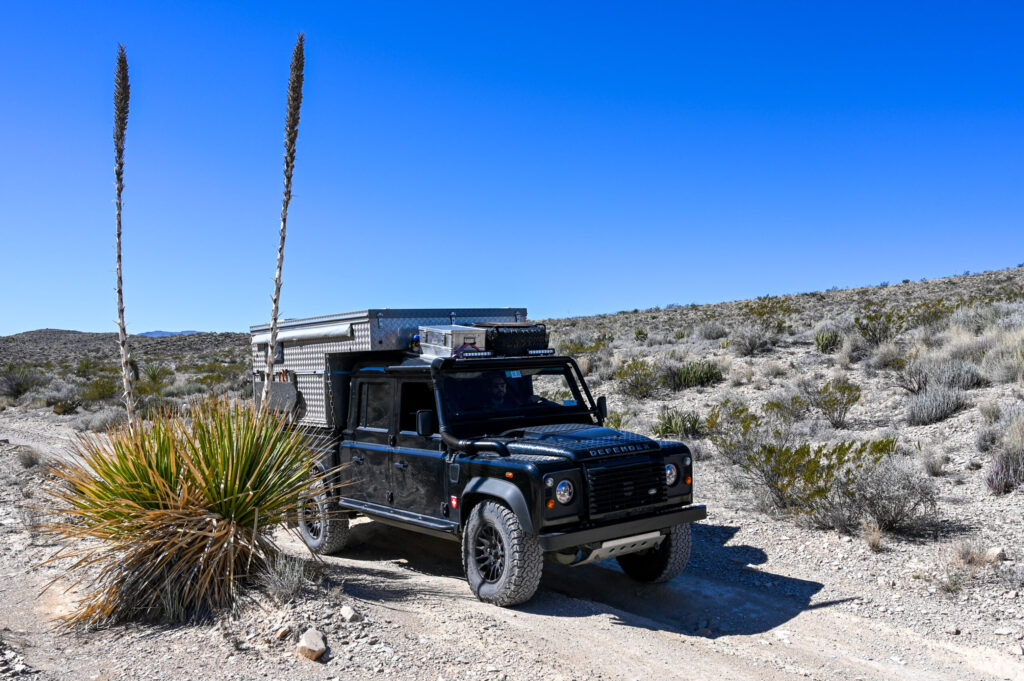
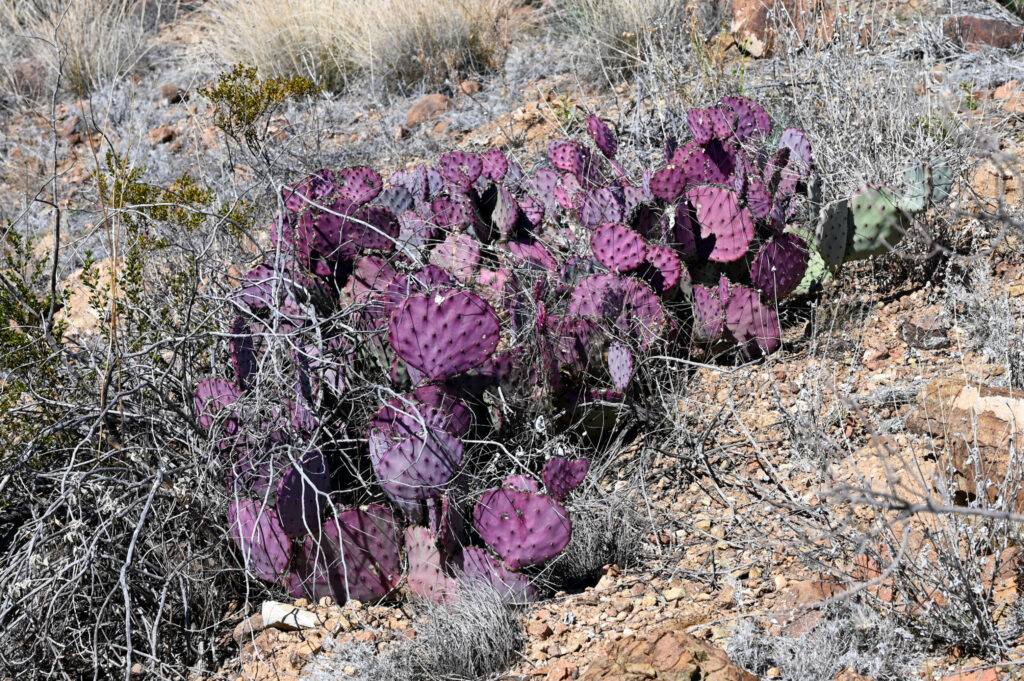
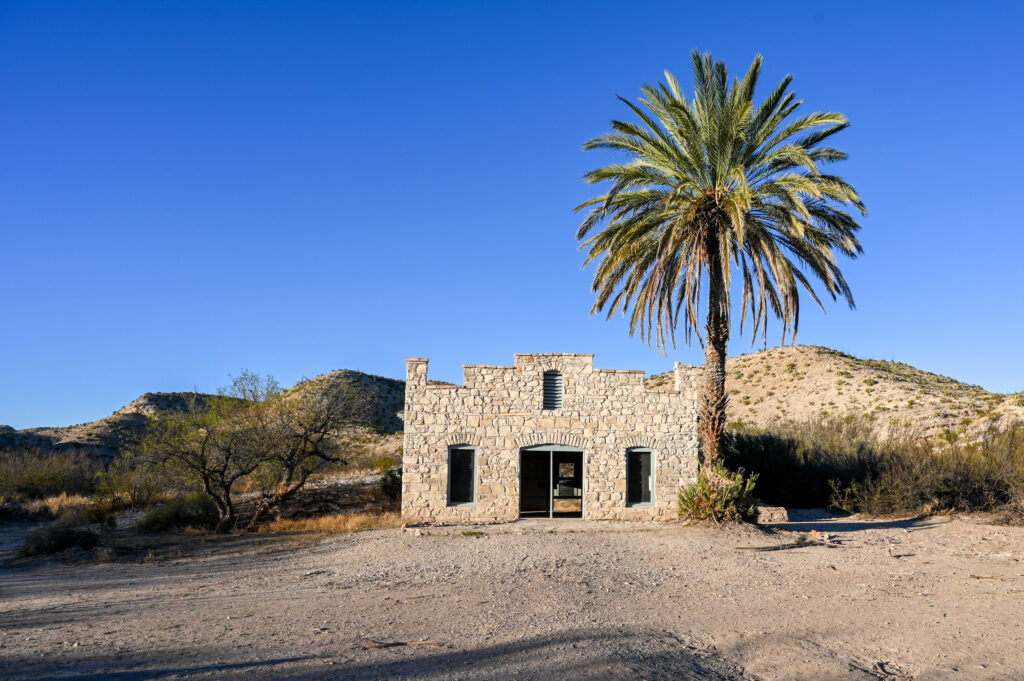
The Rio Grande is the most important water source in Big Bend. The river is mainly home to Mexican souvenir sellers. They come to the American side by horse or mule, place their souvenirs in strategic locations including cash box and wait on the other side of the river until tourists buy something. They regularly check their “outlets”. If you are lucky, you can also observe beavers. The Rio Grande defines the southernmost national park border, which is also the border with Mexico, at about 118 miles (about 190 km). The national park also takes its name from this section of the river, because the Rio Grande suddenly changes its southeasterly course to northeast, so it makes a “Big Bend”.
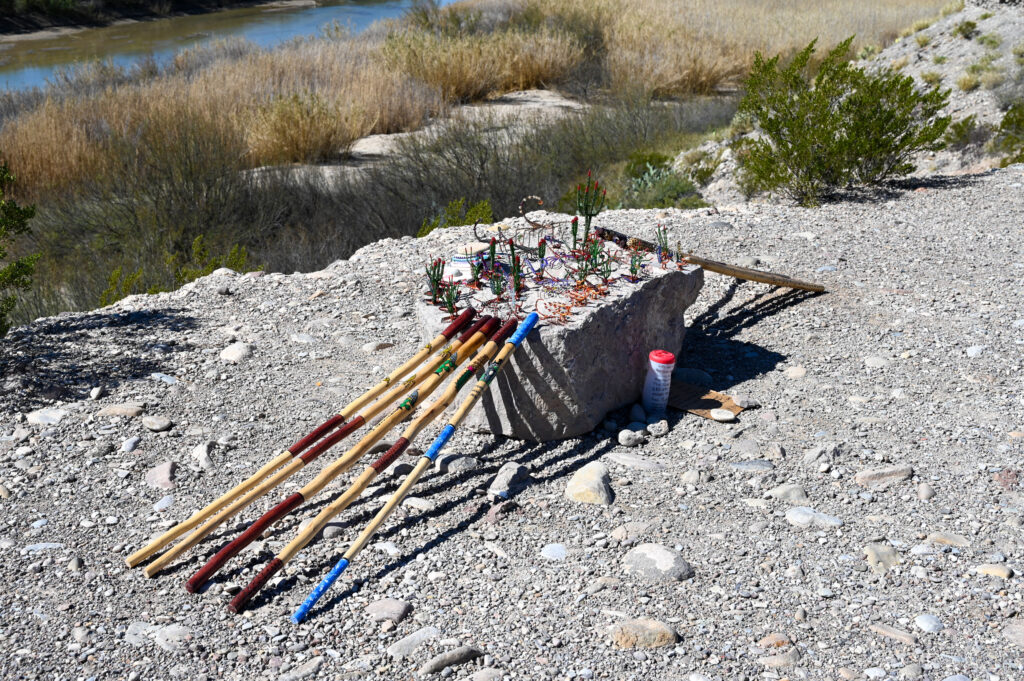
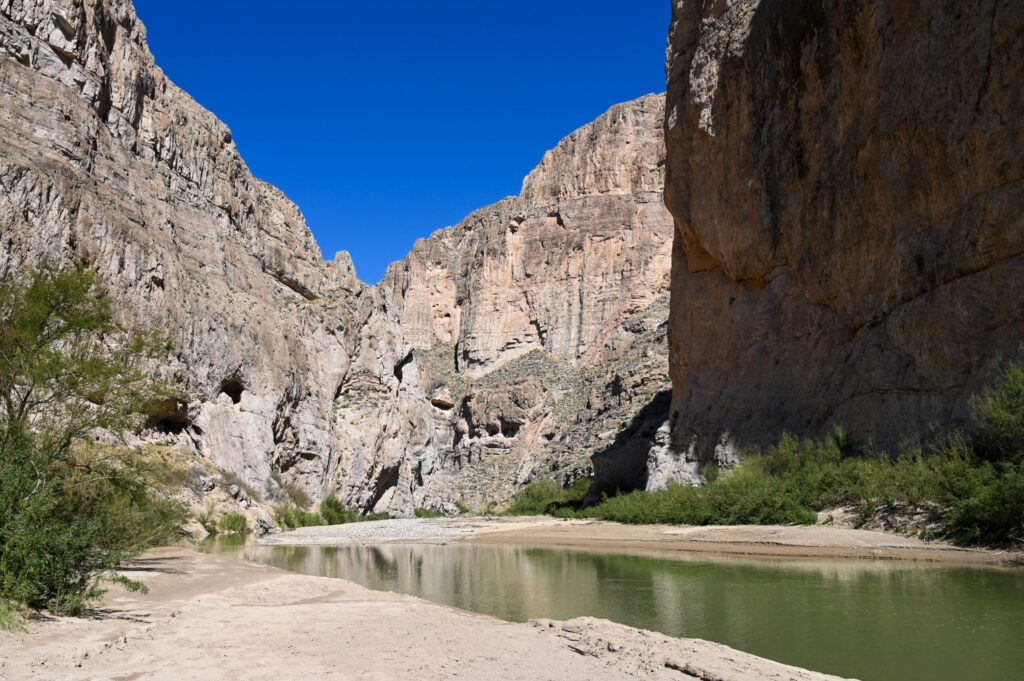
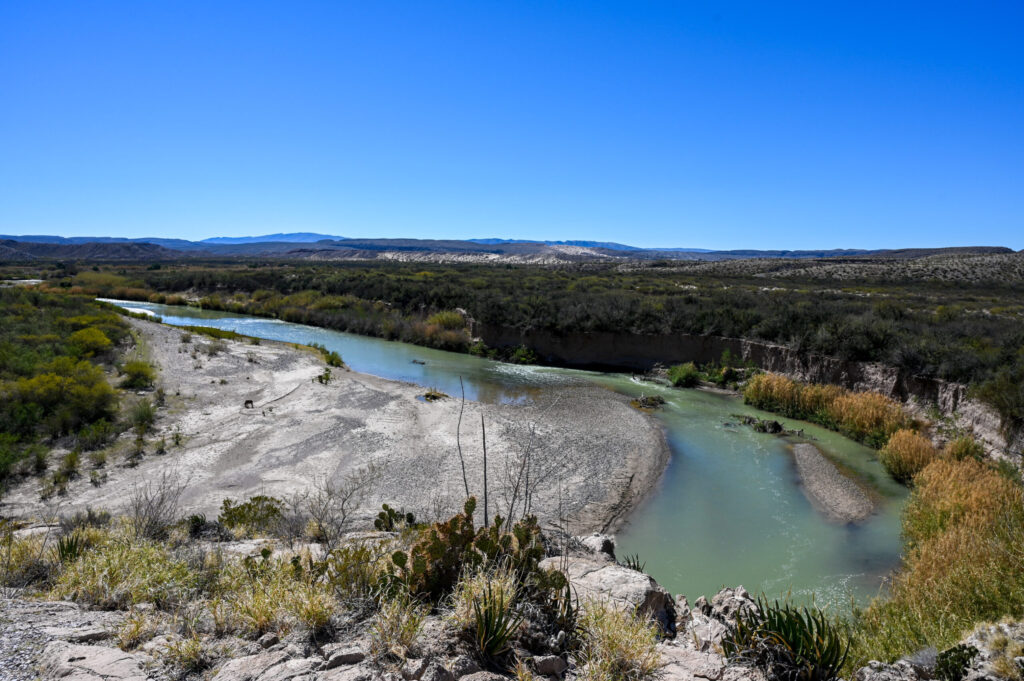
The Chisos Mountains protrude from the desert like a green island, which is why such phenomena are also called “sky islands”. The highest point, Emory Peak, is at 2,385 m. The Chisos Mountains are the only mountain range in the United States that is completely within a national park. In the mountains the climate is much cooler and wetter, which is why douglas firs, maple trees, meadows and wildflowers are found up here. Coyotes and pumas also live here. So, careful when hiking…
What better way than to explore the national park with your own vehicle on slightly more or less challenging routes. For this reason, we get an off-road map of the national park in the visitor center, which contains not only the waypoints but also all sorts of interesting things about the respective routes. On the off-road routes you are quite alone and can enjoy all the beauty that Big Bend has to offer. If you want to relax after a hard day on the road, you can do so in hot springs. Yes, in the middle of the desert they are right next to the Rio Grande.
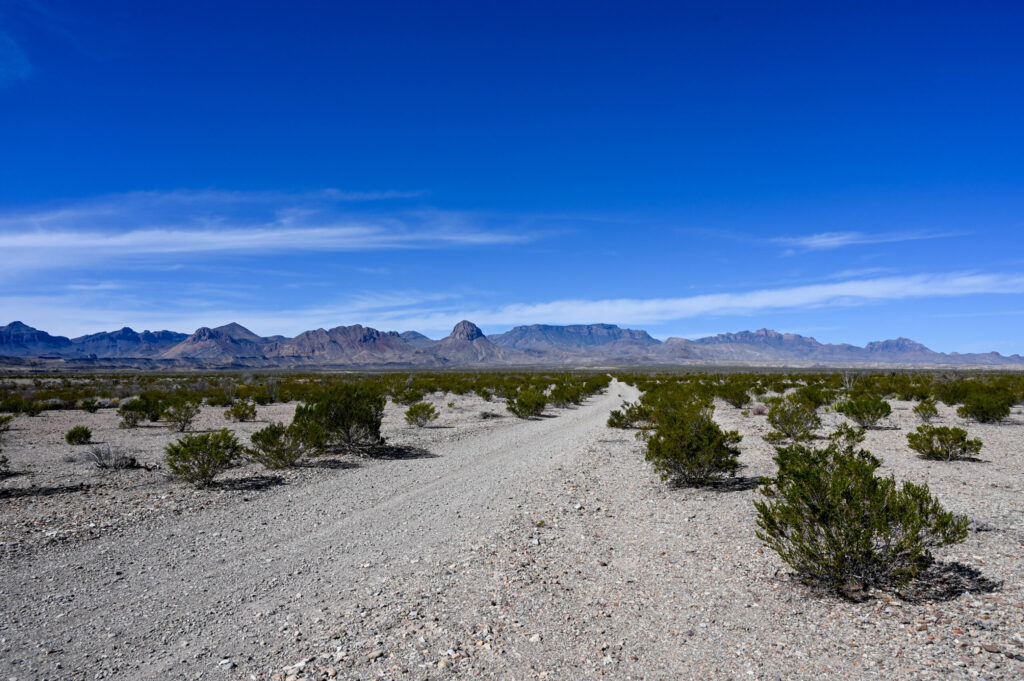

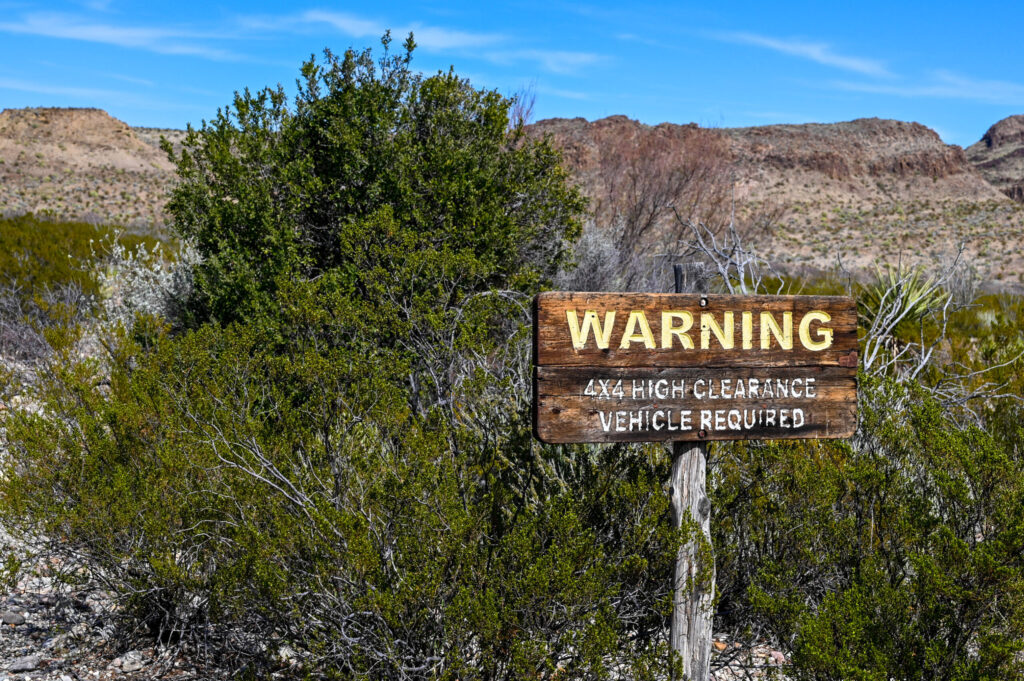
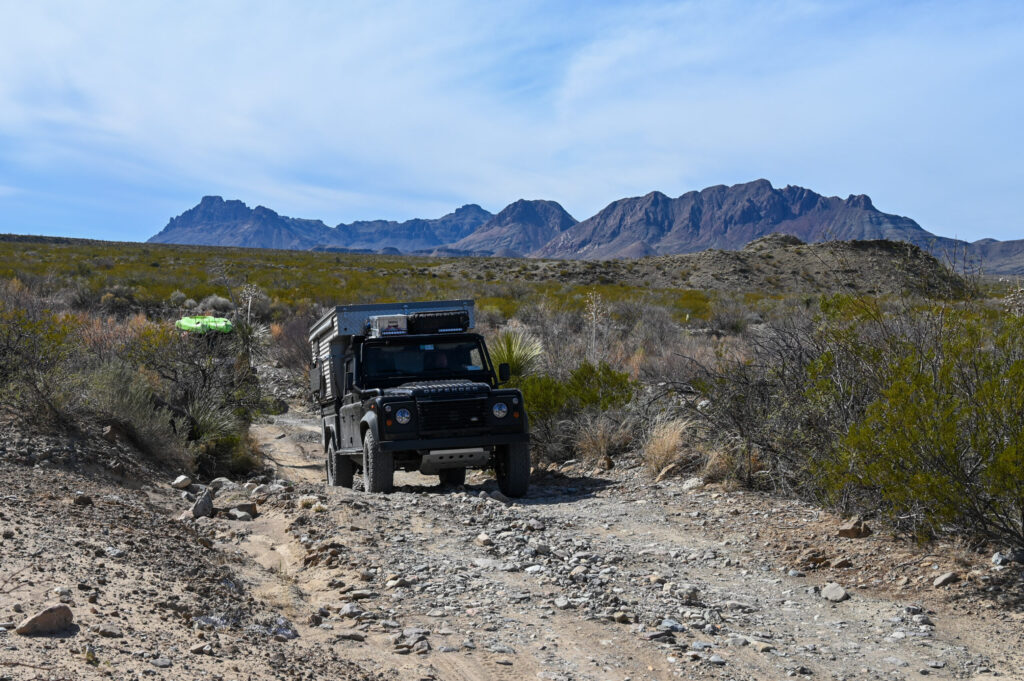
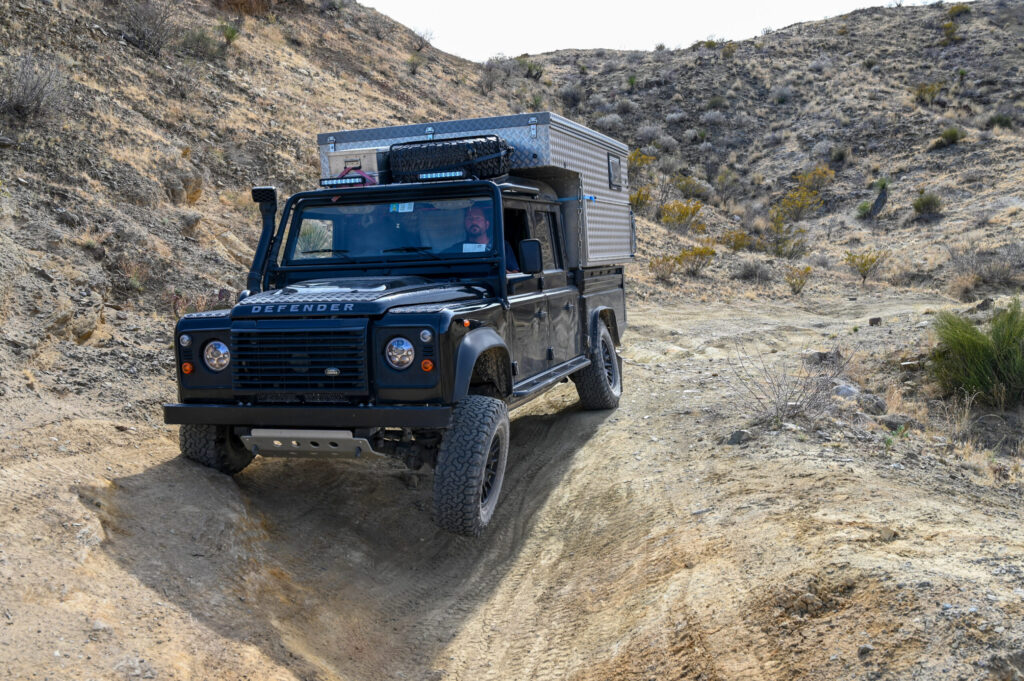


The different canyons in the park are also fascinating. Geologically special is the Ernst Tinaja Canyon, in which the rocks are stacked like waves. The limestone glows from golden yellow to pinkish, depending on the sun’s rays. In certain places, deep pools have dug into the rock, where there is water at any time of the year. No one knows exactly how deep the pools are. From time to time, however, careless wild animals fall into it. It is impossible to get out, because the edges are smoothly shaved by wind and weather and the walls are too steep. So better not go too close. Also impressive is the largest canyon in the park, Santa Elena Canyon. Just getting there is worthwhile and offers plenty of viewpoints. A short walk into the canyon. Here you become aware of the dimensions, because the walls rise 457 meters in height. Tremendous! The beauty of Santa Elena Canyon is best experienced with a river tour.
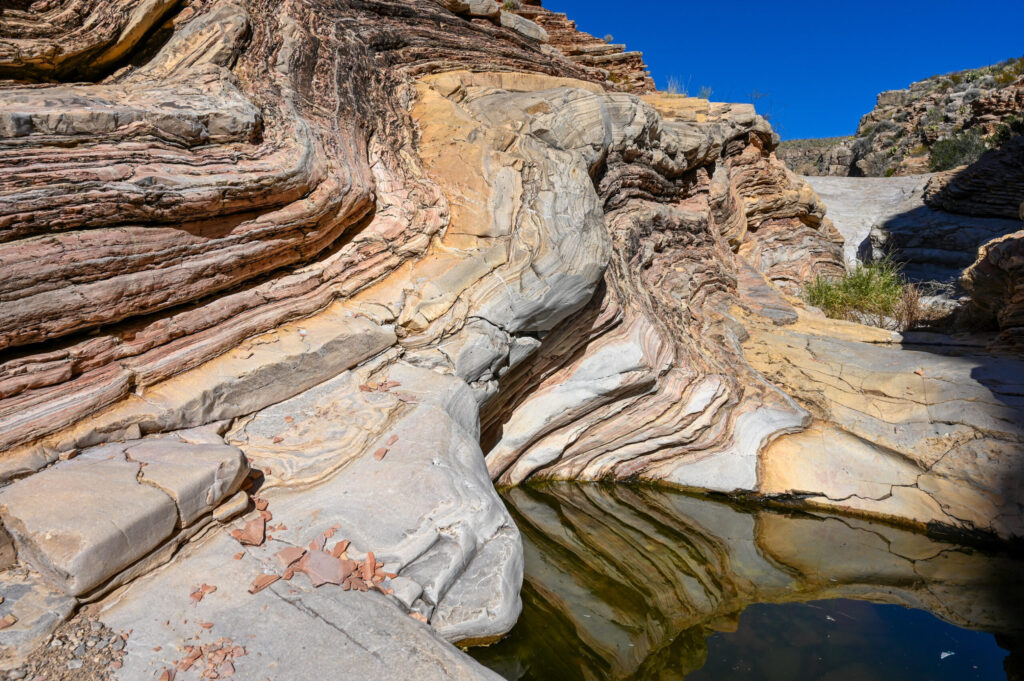
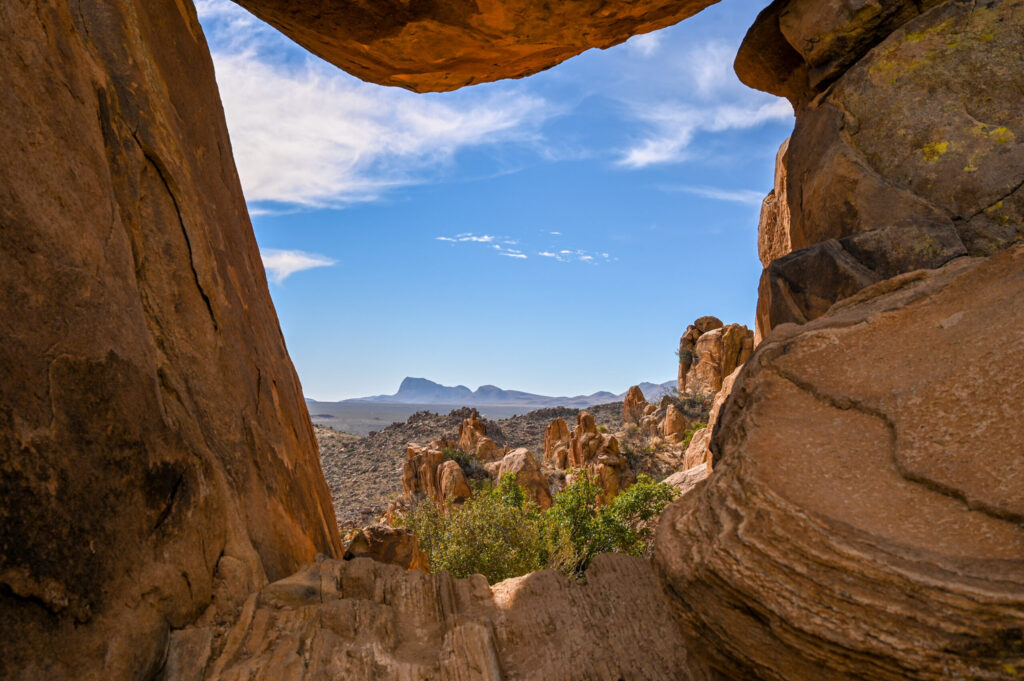
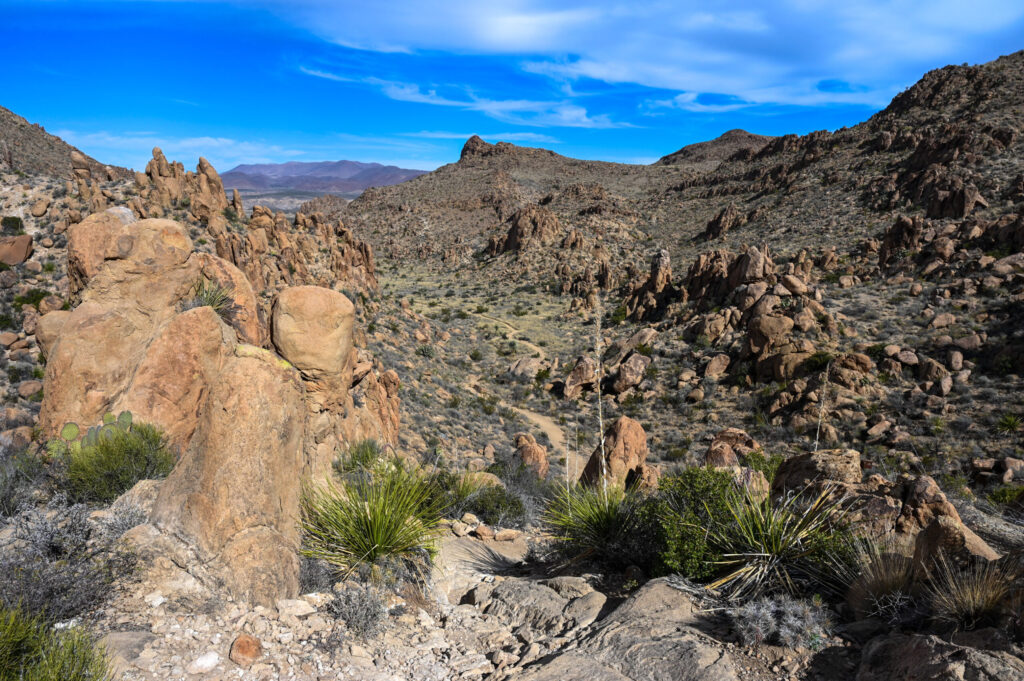
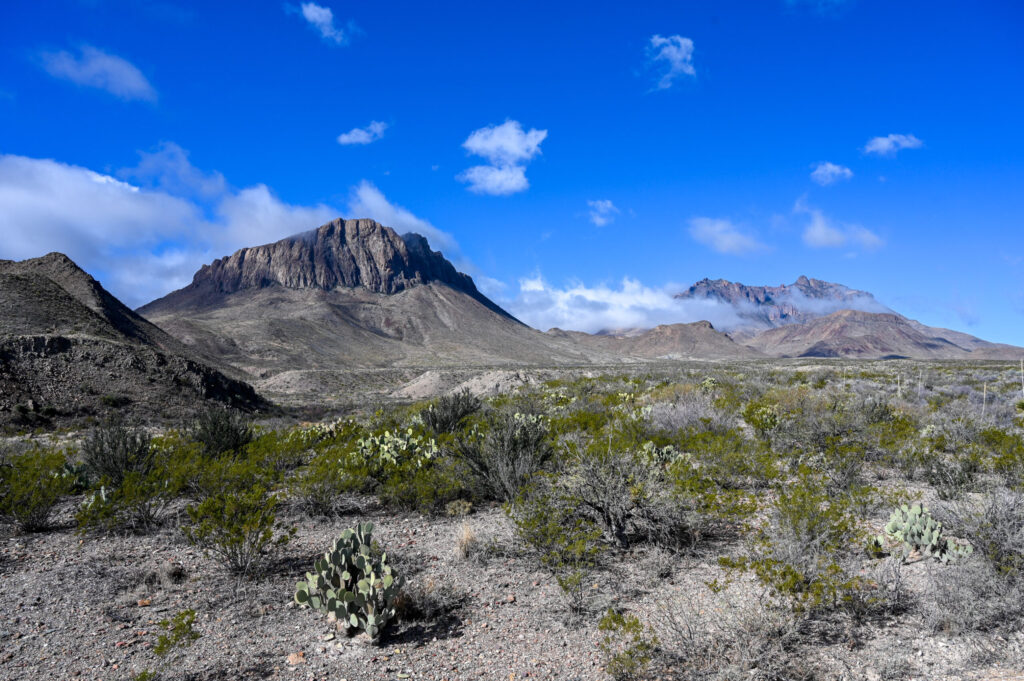
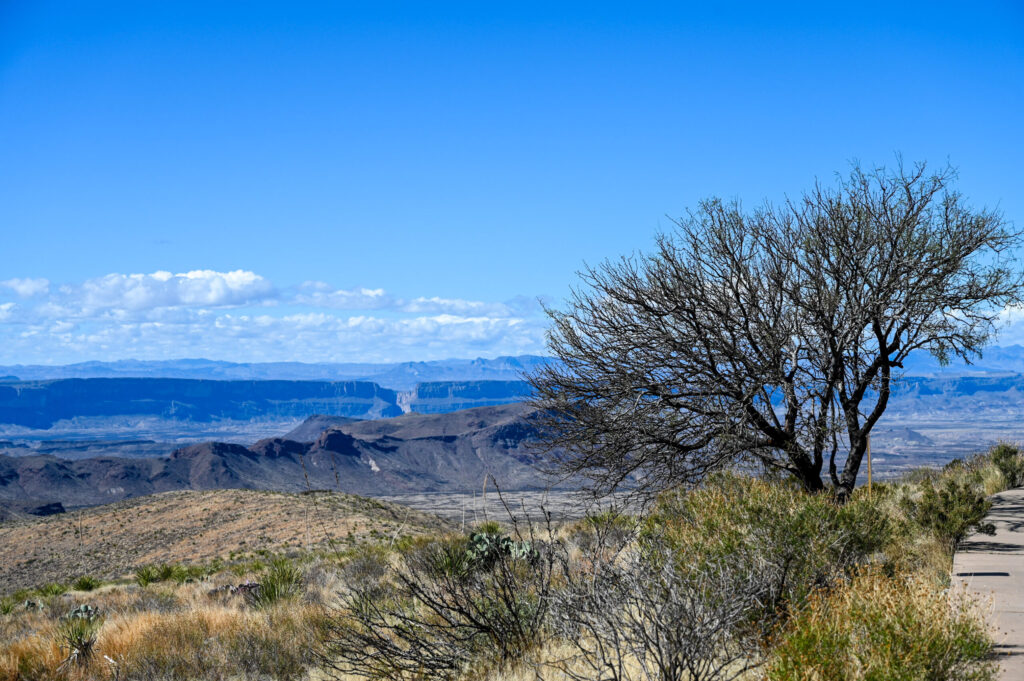
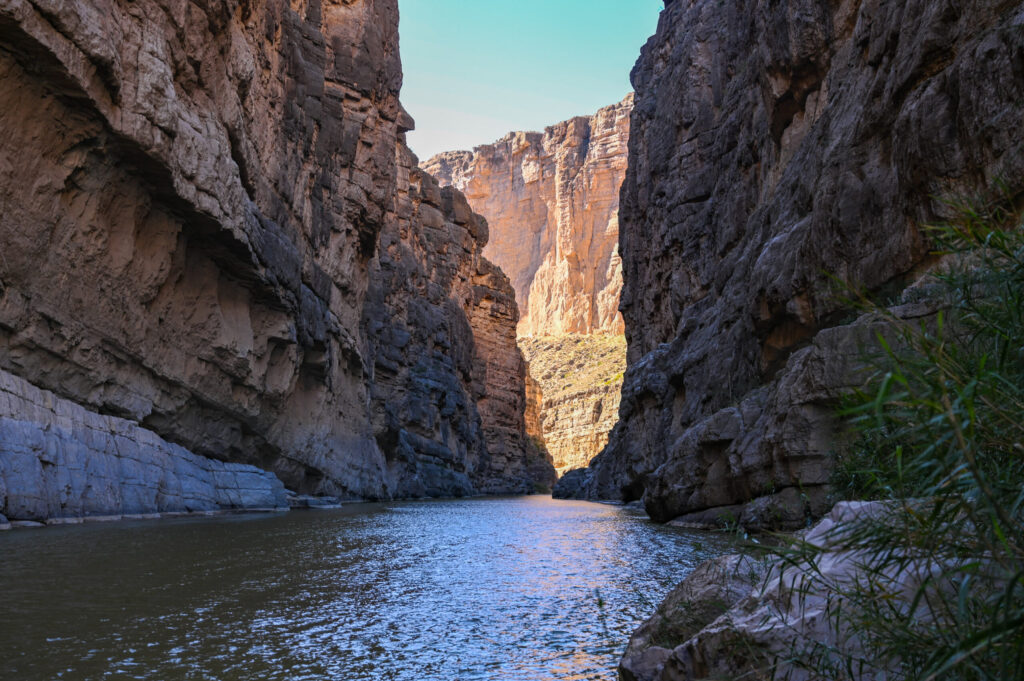
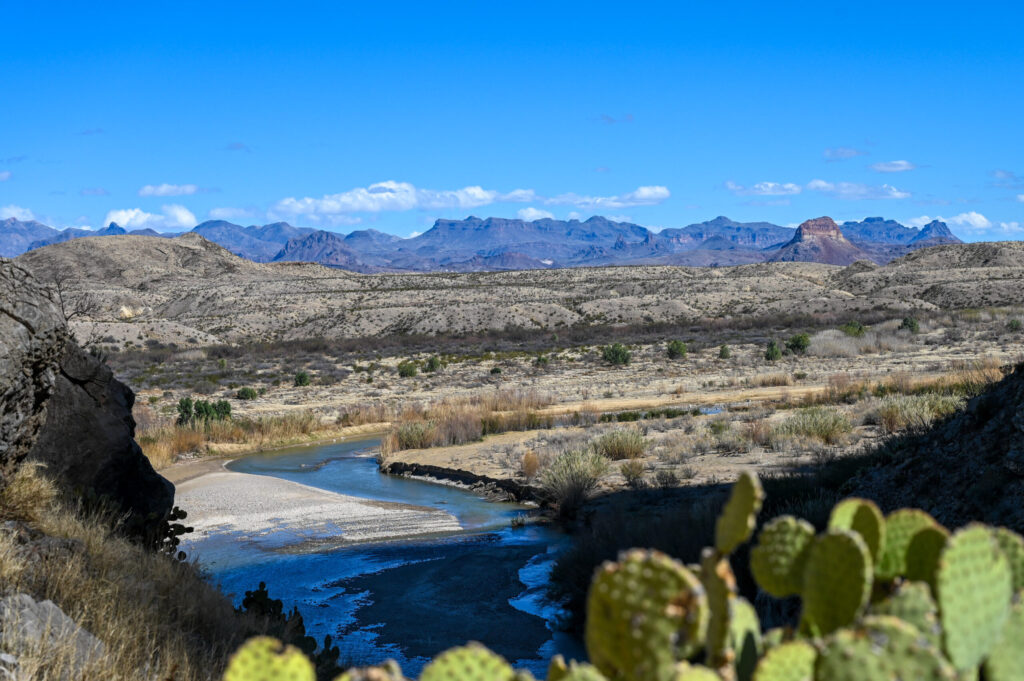
If you have enough time, you should definitely plan a hike in the Chisos Mountains. We chose the South Rim hike, a circular hike with an altitude difference of 600 m and a distance of about 23 km. In the visitor center one will get the corresponding hiking maps and information. A well-developed road winds up the mountain. The vegetation of the Chisos Mountains is similar to our latitudes in the Alps, except that agaves still live at this altitude. It is quite impressive to see such a small plant with such a huge flower head. It rises up to 12 meters in height! The plant blooms only once in its lifetime (they live up to 50 years), as it dies after that. If you want, you can also stay overnight up here. There are countless campgrounds. There is also a manual for the use of the toilet, hahaha! The view from the South Rim is gigantic! Views without end. We can even see Santa Elena Canyon. The hike was definitely worth it.
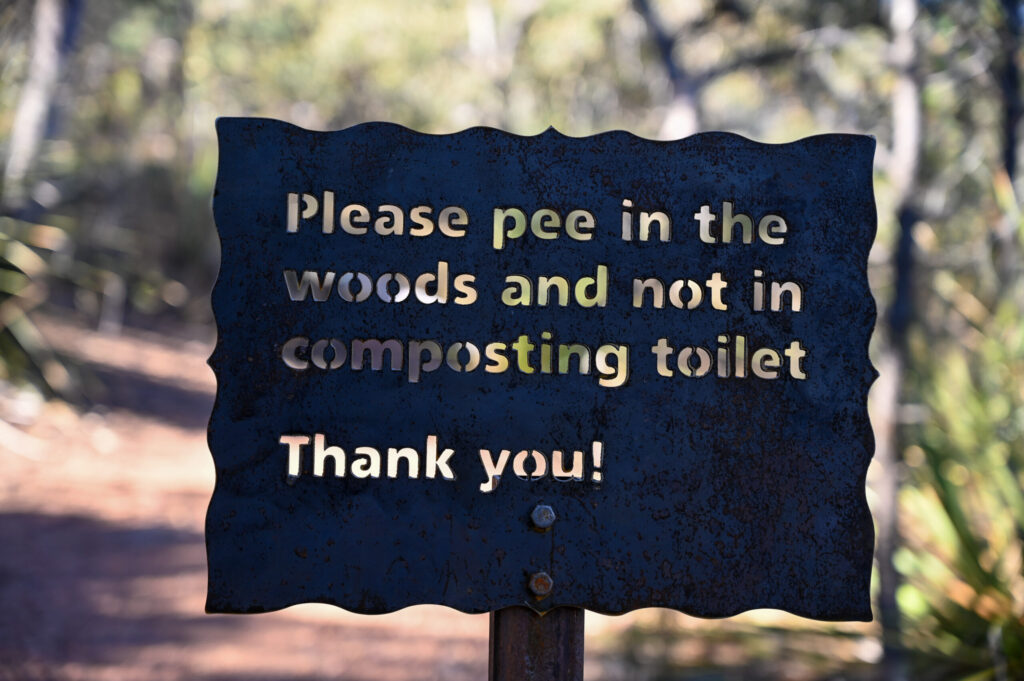


Until now, we have often travelled in urban and populated areas. This, of course, brings a certain hustle and bustle with it. In Big Bend we were able to really switch off for the first time and enjoy pure nature. Just exhale and rest. All in all, we stayed eight nights in Big Bend National Park. We have had a very good overview of the different regions and have seen and done what we wanted. Of course, one can stay longer. After 14 days, however, one has to leave the park in any case.

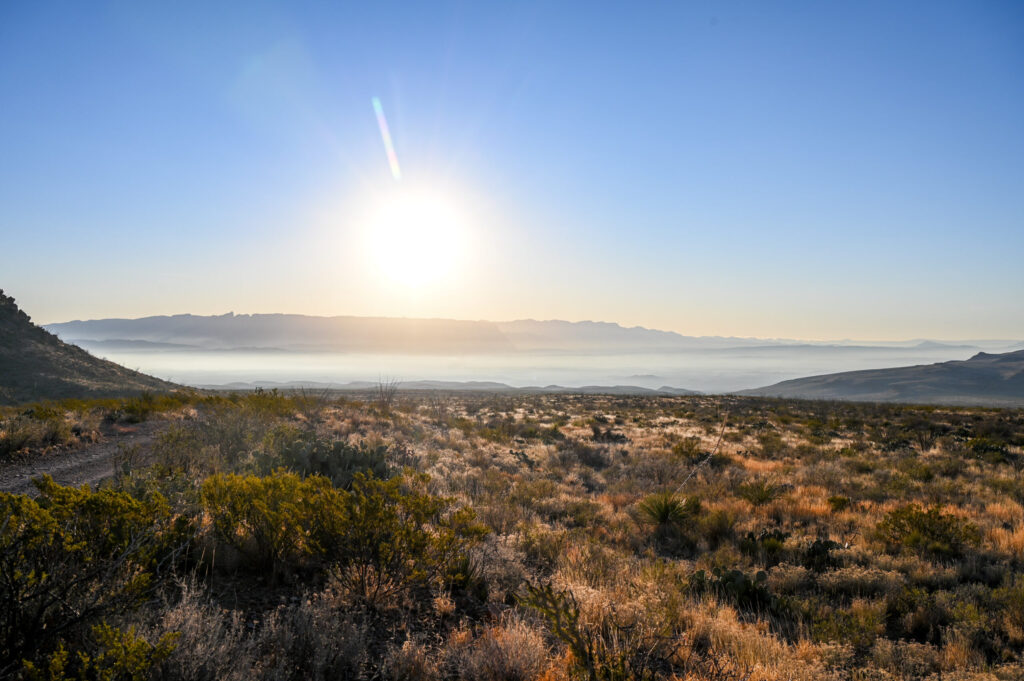
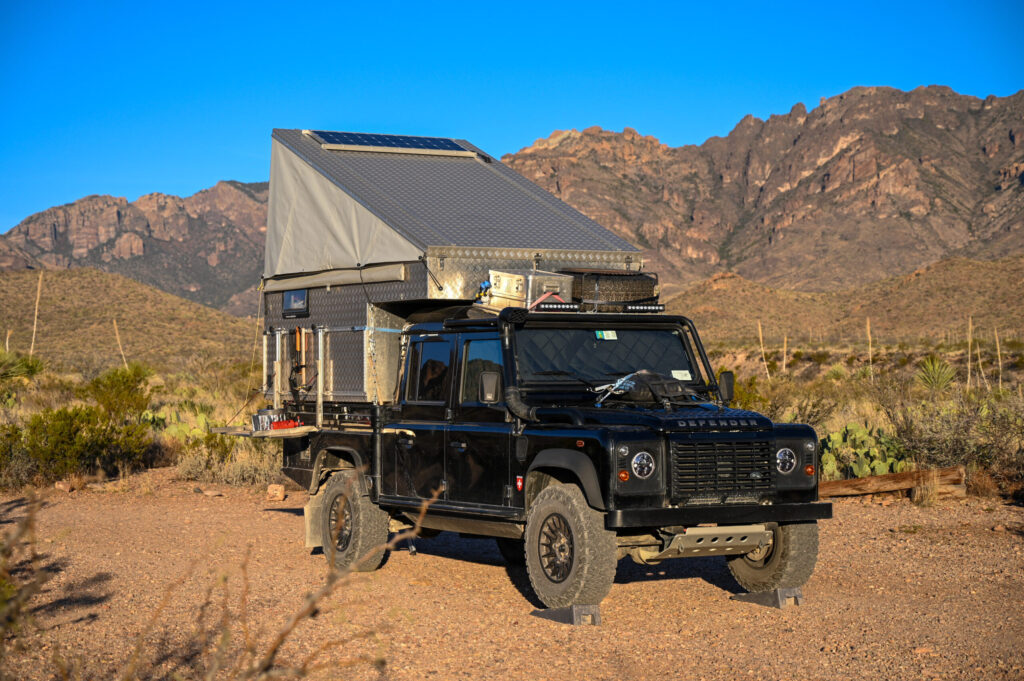
Marfa and second largest telescope of its kind
Next we are heading direction Carlsbad Caverns. In Terlingua, the nearest village to Big Bend National Park on this side, we stop briefly to see this ghost town. In the formerly decaying buildings, mainly small shops have settled. Here we also see our first real Texas Longhorn! A giant creature!
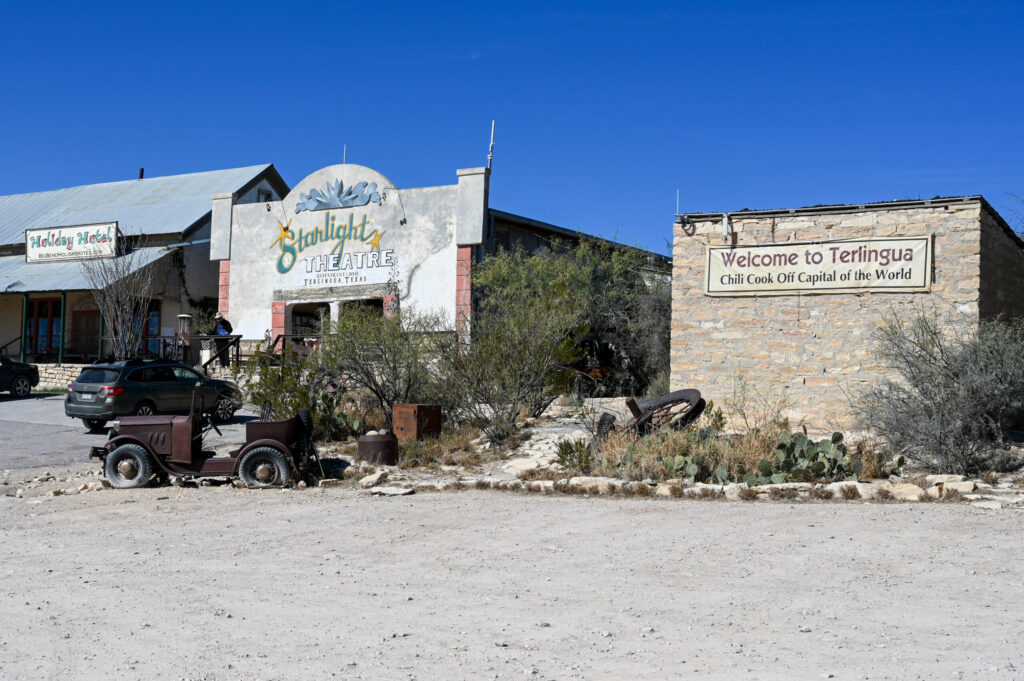
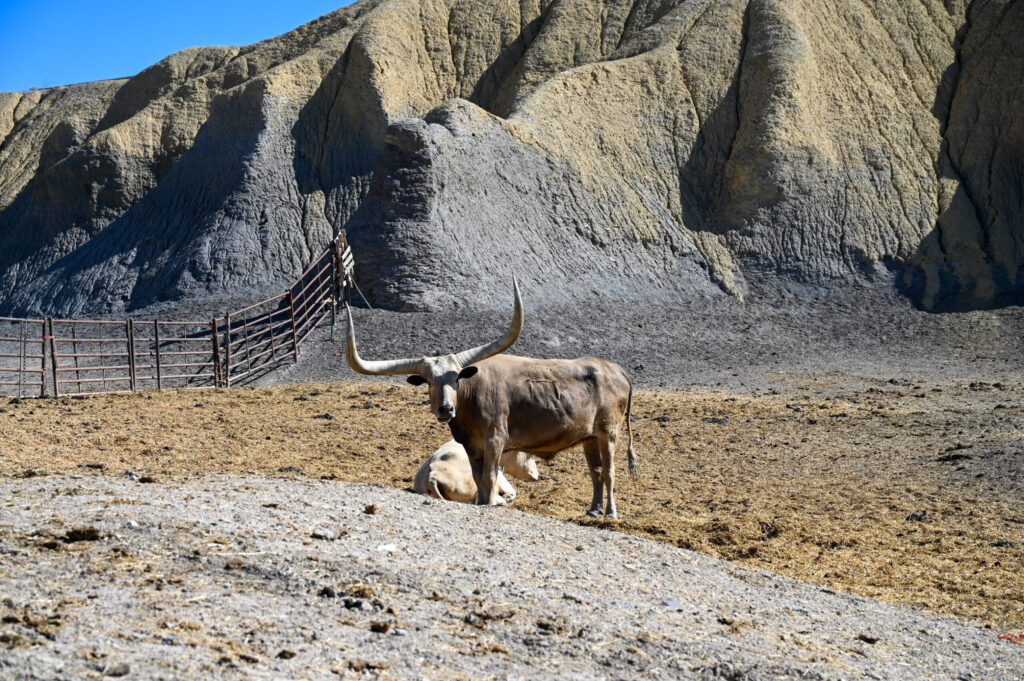
Via the Camino del Rio, also called River Road, we continue via Presidio to Marfa. The road winds along the Rio Grande through dry river beds (arroyos), slopes and imposing canyon walls. For the most part, the road runs through Big Bend Ranch State Park. The area is similar to Big Bend, only are the mountains closer and the rock is much more colorful.
Since there are still a good 2.5 hours to drive from Marfa to the Carlsbad Caverns, we wanted to stay in the small town. We have heard that there is supposed to be a light phenomenon in Marfa, the Marfa Lights. Perfect, we can still visit the village by day and marvel at the lights in the evening before we continue the next day. At the tourist office we try to get more information about Marfa and the lights. We learn that Marfa is actually an artist’s place, where the world-famous The Chinati Foundation is also at home. No worries, this foundation didn’t tell us philistines anything… Marfa is a curious village. Except for the pretty County Courthouse, there are actually only art galleries and some cool little shops. There are some crazy people running around in the streets. Artists! Since we haven’t received any useful information about the Marfa Lights and these don’t seem to be too spectacular, we decide instead of continuing to Fort Davis. One of the largest telescopes in the world is to be located at the McDonald Observatory. Sounds much more exciting than any lights.
We get tickets for a tour of the telescope and for the Star Party in the evening, where you can observe different constellations through telescopes set up on the site. The Hobby-Eberly Telescope (HET) is the second largest telescope of its kind in the world. It has a diameter of 10 m! The largest is in the Canary Islands. An even larger telescope (the Magellan Telescope) is currently being built in Chile. This is said to be ten times stronger than the Hubble telescope, which sends images from space. However, the world still has to wait until 2029. Oh yes, the mystery of the Marfa Lights is also being solved. They are… no, you can find out for yourself if you want to ☺. The Star Party would have been really cool if it weren’t for the clouds that suddenly show up. Clouds are not ideal for stargazing. After all, we see Sirius, the brightest star still visible. The visit to the McDonald Observatory was absolutely worthwhile for us. If you are a little interested in astronomy, you will also be thrilled.
We probably fell a little bit in love with Texas. This state has a wide variety of regions to offer, such as prairie and lakes, hills, Gulf Coast, lowlands and so much more than herdy cows, oil pumps and barren land. People are immensely friendly, even towards strangers. This is probably because the state is so sparsely populated and thus the sense of belonging is simply greater. We had an immensely nice time in Texas and would like to discover the other regions. Now, however, it is time to leave the beautiful Lone Star State for New Mexico, where the Carlsbad Caverns are located.
